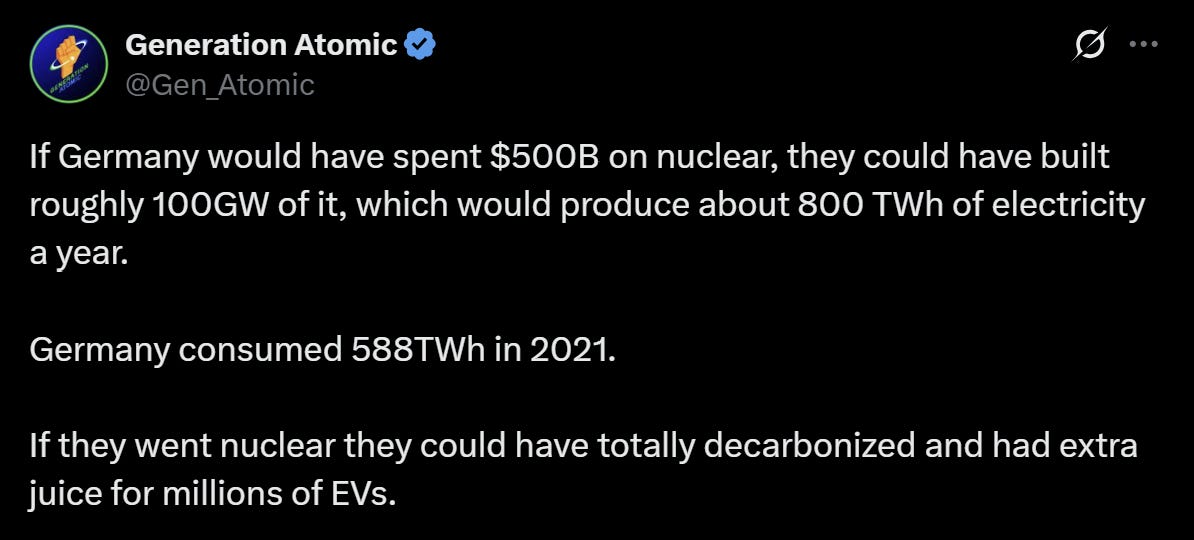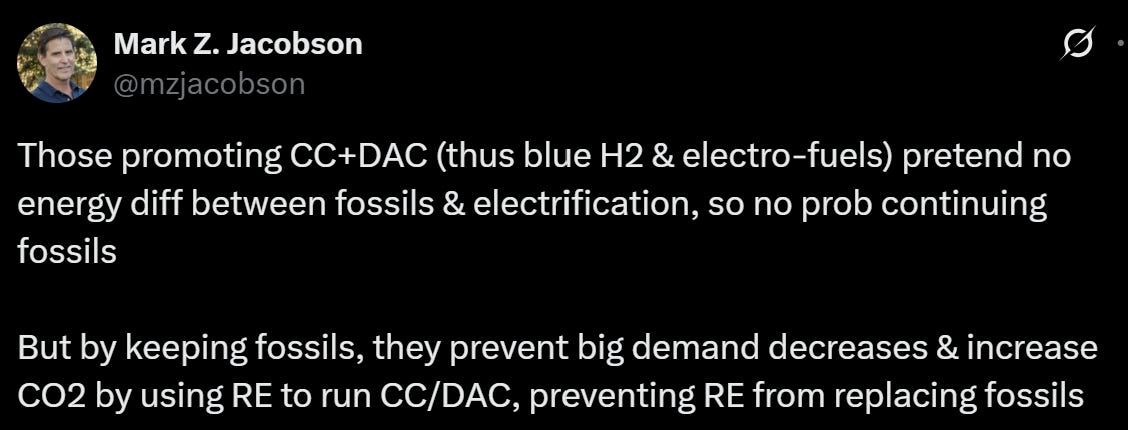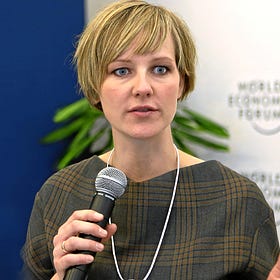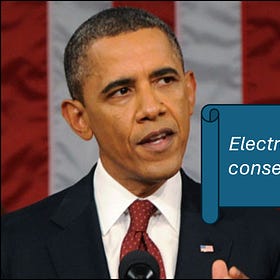Renewables Win the Delay and Delay the Win
Big Oil is accused of delaying a low-emissions future. What if renewables are a bigger culprit?
The energy transition is a tangle of good intentions, vested interests, market distortions and unintended consequences. For years, advocates of wind and solar power have framed their cause as a moral imperative, casting fossil fuel industries as villains orchestrating delays to an inevitable renewable future. Technologies like carbon capture, utilization, and storage (CCUS), hydrogen or natural gas1 as a bridge fuel are often dismissed as smokescreens—ploys by the favourite bogey-man, "Big Oil", to extend the reign of hydrocarbons.
In my humble opinion this is not a pernicious “delaying tactic”2.
This is simply an industry with certain expertise being told they have to be “part of the solution” and seeing that governments are throwing money at it.
“You want a Hydrogen Economy? Sure, daft idea, but hey… we can provide hydrogen if you want to pay stupid prices…. You want CCUS? OK - no problem…
Capitalism working within a central-planning overprint.
Meanwhile there is a sad irony: the relentless push for renewables, coupled with anti-nuclear sentiment from within the same camp, may inadvertently serve as a delaying mechanism, hindering a more pragmatic solution: a revival of nuclear energy.
The Renewable Critique of "Delaying Tactics"
Renewable advocates argue that technologies like CCUS are distractions. They point out that capturing carbon emissions is inefficient, expensive, and unproven at scale3.
Natural gas, touted as a cleaner bridge fuel, is still a fossil fuel, locking in emissions for decades.
Even blue hydrogen, which relies on natural gas with carbon capture, is often criticized as a half-measure that entrenches fossil fuel infrastructure.
The claim is that these are stalling tactics, designed to slow the inevitable rise of a 100% wind-and-solar grid.
Whilst I don’t agree that there is a “conspiracy” to push things like CCUS/DAC and various shades of Hydrogen4, historical evidence suggests there was an oil lobby against nuclear power in the mid-20th century, wary of its potential to disrupt their markets. Petrostates, too, likely saw nuclear as a threat to their economic dominance.
But the renewable camp’s narrative, that these technologies are mere distractions, ignores a more pressing reality. Despite trillions of dollars spent, and headline-grabbing “deployment” and “capacity” numbers - there is almost no displacement of hydrocarbons in the global energy mix. These “massive” additions of renewables have not even managed to match the increase in global energy demand in the last decade.
Moreover, the increasing urbanization of the 7bn who are not in the “rich country” club, PLUS the forecasts for AI energy demand, suggest that this gap will increase.
If only there was a low-emissions solution.
Nuclear: The Obvious, Yet Obstructed, Answer
Nuclear power: it is dense, reliable, and emits no carbon during operation. A multi-reactor plant can power a city, occupying a fraction of the land needed for equivalent renewable capacity (which isn’t “equivalent” unless you factor in the 100% back-up needed. France, for instance, generates over 70% of its electricity from nuclear, with one of the lowest per-capita carbon footprints in the developed world. Small modular reactors (SMRs) and next-generation designs promise even greater flexibility and safety.
Yet, nuclear power faces fierce resistance from within the renewable sector itself. The arguments are familiar: nuclear is too expensive, takes too long to build, and carries risks like accidents or waste storage. These critiques, while not baseless, often overstate the challenges. Unfortunatley, recent large-scale nuclear plants have taken over a decade to construct and come in way over budget… in the UK and the USA.
However, as Kathryn Porter at Watt Logic has pointed out, South Korea and the UAE have been able to build in 8 years and on budget. The difference? regulations that are fit for purpose, not aiming for “zero risk” (which is patently impossible in any industrial activity) and by building standard designs (Hinkley Point C in the UK is an “experimental” EPR design, Vogtle in the USA was an “evolutionary” design)
The most promising large-scale technology is the APR-1400 advanced light water reactor developed by Korea Electric Power Company (KEPCO). Six of these have been built in South Korea and the UAE, with another due to open soon. They have been delivered broadly on time (in eight years) and with modest cost overruns. Kathryn Porter
Nuclear’s upfront costs are high, but its long-term economics—decades of stable, low-cost power—compare favorably to renewables’ reliance on subsidies and frequent infrastructure replacement. Equally, the stability provided by nuclear power is significant if one is concerned about global gas supply/prices.
When looking at the enormous forecast energy demands, the land use and cost issues of renewables, and the energy-security and emissions risks of imported fossil-fuels - massive nuclear deployment would seem to be the obvious answer.
Renewables Undermine Nuclear’s Economics
Prioritizing wind and solar in electricity markets distorts the economics of nuclear power, which relies on consistent operation to remain viable. Nuclear plants, designed for always-on generation, face financial strain when renewable sources, backed by subsidies and priority grid access, flood the market with cheap power during peak production. This depresses wholesale electricity prices, eroding the revenue of nuclear operators. The closure of Indian Point in New York State is a case in point (“Undermining”).
Despite providing reliable, carbon-free power to millions, the plant struggled to compete in a market skewed toward subsidized renewables and cheap natural gas. Its 2021 shutdown led to increased reliance on natural gas, spiking regional emissions. By favoring intermittent sources, renewable policies inadvertently undermine the very low-carbon technology needed for deep decarbonization. Stein’s Law doesn’t fail in these situations:
The Absurdity of Penalizing Nuclear Success
France, with its nuclear-dominated grid and Europe’s lowest carbon electricity, was slapped with a bizarre penalty in 2022. The EU fined France half a billion Euros for “slow” wind and solar deployment. You can’t make this stuff up.
The European Union’s renewable targets prioritize specific technologies over actual emissions outcomes, punishing a country that has already achieved what others chase.
This dogmatic focus on wind and solar, regardless of a nation’s carbon footprint, diverts resources from scaling nuclear toward less reliable alternatives, exposing the flawed logic of renewable absolutism.
Renewables Win the Delay
The massive financial and political capital poured into wind and solar is crowding out a nascent nuclear revival. Global spending on renewables reached $1.8 trillion in 2024 alone, according to BloombergNEF, while nuclear investment lags far behind.
What if Germany had spent on nuclear instead of wind and solar?

Subsidies for renewables dwarf any funding for nuclear in most countries, skewing markets and research priorities. Anti-nuclear lobbying, often cloaked in environmentalism, amplifies the effect. This stance, however well-intentioned, delays the very decarbonization they champion. It is a fine example of the trade-offs faced in real-world energy decisions, which are masked by the “Greener, Cleaner and Cheaper” magical thinking. Nuclear power has issues, hydrocarbons have issues - and whisper it - renewables have issues…
Again, with painful irony, the renewable sector’s dismissal of nuclear mirrors the tactics they decry in fossil fuel industries. By sidelining a proven, scalable technology, they risk prolonging dependence on hydrocarbons—precisely what they accuse “Big Oil” of doing. Natural gas, for instance, remains a default backup for intermittent renewables.
Meanwhile, nuclear projects see their economics undermined by renewables, they struggle for funding, face regulatory hurdles, and battle public perception shaped by decades of fearmongering.
A Path Forward
The energy transition demands pragmatism, not dogma. Betting the planet’s future on “Wind Water and Sun” is reckless. Nuclear, with its unmatched reliability and low-carbon profile, must lead the charge. Governments should redirect renewable subsidies to nuclear deployment and streamline licensing for new reactors.
Chris Wright - the “oil and gas shill” now heading the US Dept of Energy is vocally pro-nuclear. This doesn’t fit the narrative, and is rarely reported - but is clear in his work, even prior to taking the helm at the DOE.
Most controversially, the renewable sector should drop its anti-nuclear rhetoric, recognizing that a shared goal—decarbonization—requires all tools on the table.
The irony of the renewables induced-delay is stark. In their zeal to bury fossil fuels with magical thinking, advocates are delaying the one technology capable of replacing hydrocarbons at scale.
Previous Energy IQ posts cited hereabove
The world in 2040 (part 1)
In a now infamous article that was originally posted in 2016 on the World Economic Forum website (and subsequently on Forbes) Ida Auken, (then Member of Parliament, Parliament of Denmark) waxed lyrical on their “vision” of how the world would be in 2030. Projecting only 14 years into the future we get to share in this Utopian world in which everything …
Never Mind The B*ll*cks, Here's The Merchants of Boom
Eight years ago, someone quite influential postulated that the world would be running 100% on solar energy “by 2030”. I didn’t believe it then, and I’m not holding my breath now with eight years to go... This world-view was clearly bollocks yet it was greeted with rapturous applause, easy-acceptance and indeed huge indulgence. It was what people
Undermining: Electrons have Consequences
Barak Obama famously said “elections have consequences”. He clearly misspoke; surely he meant to say “electrons have consequences”? The choice of how we generate electrons has consequences, but are these consequences intended or unintended?
A common trope is that “natural” gas is a deliberate obfuscation - a marketing ploy by the evil empire - ignorant of, or simply ignoring the fact that Natural Gas (methane) was so named to differentiate it from “Town Gas” (UK) or “Coal Gas” (North America) that was manufactured from coal (with lots of unpleasant impurities).
when you look at the “half life” of oil and gas reserves of Big Oil, you see pretty quickly there is no such thing as “stranded assets”.
CC is a daft idea, DAC is daftest of all… not because it is a “delaying tactic”, but because it is economically bonkers. It seems that it is done with good intentions and/or a profit motive based on massive subsidies (and/or unsustainable carbon “prices”).
The simpler explanation, as mentioned above, is that it is simply market distortions created by daft subsidy programs and “political will”.












"The energy transition demands pragmatism, not dogma."
The above is unquestionably true, but sadly ignored. Instead we live in a Wizard of Oz world in which we're ordered to "pay no attention to that man behind the curtain".
Excellent post.
Another great piece Pandreco. I was unaware that France had been penalised for not meeting renewable targets while simultaneously keeping their neighbors partially renewable grids going.